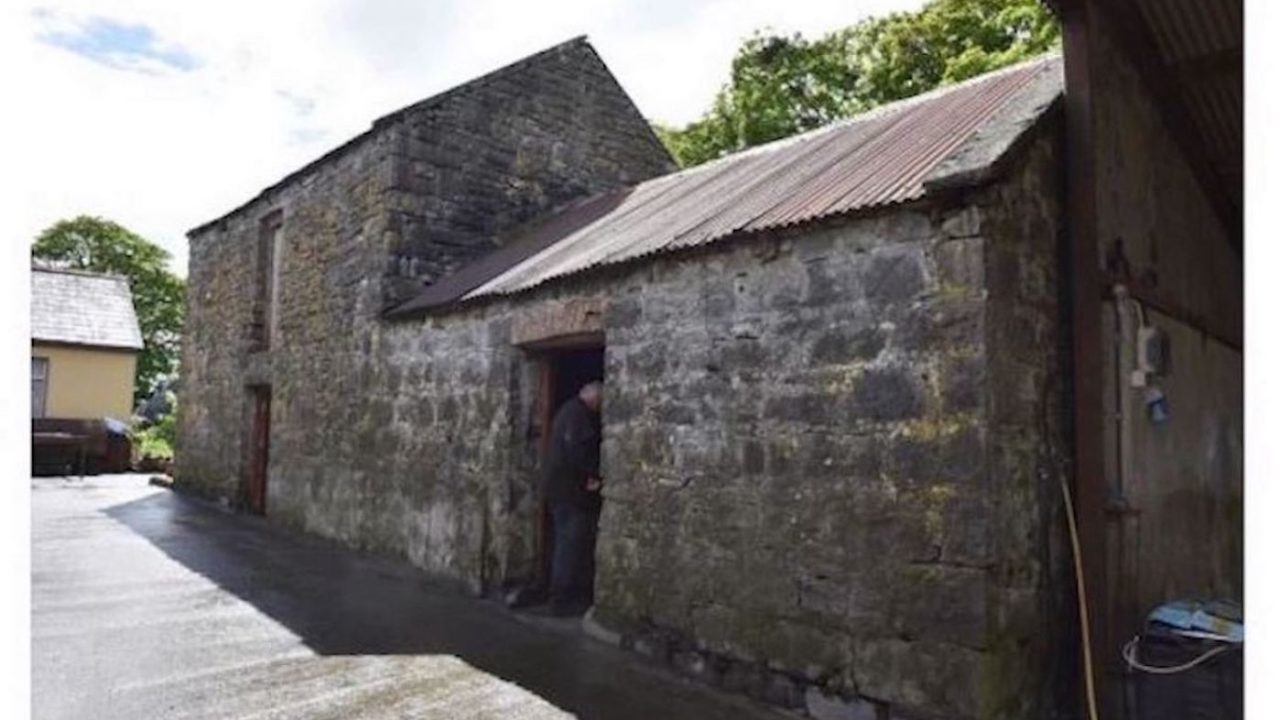A Co. Mayo suckler and sheep farmer has renovated a granary under the Green, Low-Carbon Agri-Environment Scheme (GLAS) traditional farm buildings scheme.
Michael O’Gara, who runs the farm passed down from his father at Kilgreana, Claremorris, decided to renovate the granary as it was beginning to get dilapidated.
“We noticed a lot of old buildings in the surrounding areas were turning into ruins and felt it would be a shame to let the granary go into disarray,” Michael said.
“It has proved a valuable resource for when our cows calve, in providing a secure and warm environment for both cow and calf to thrive. At the same time we will be safeguarding the granary for generations to come.
“The granary is built on lands that were stripped by the Land Commission back in the 1900s. It is one of a kind as it the only stone granary in the local area,” Michael continued.
“The stone granary was used as an office for numerous years by the Mayo Abbey Co-op which was established over 100 years ago as a place to sell fertiliser. It was originally owned by the Murphy family. The co-op is still in operation in the local area today and is one of the oldest co-ops in Ireland,” he said.

“The top part of the stone building was used for drying and storing corn. The bottom level is currently being put to good use we – use it to house cows when they have calved. The continued use of this old space is making excellent use of frugal resources.
“Any stone needed to repair the building is readily available on my own land. The organic manure produced by the cows is used as topdress to fertilise the land and grow organic vegetables. It is also benefiting the soil as the topdress contains earthworms that aerate the soil.
“When the works are complete we will still use the bottom level to house cows that have calved and the top storey will be used to store medicines and dosage and other farm paraphernalia,” Michael added.
One of the conditions of applying for the grant was to have a bird and bat survey completed. “We employed Barbara McInerney from Sligo to carry out this for us. She found five species of bats during the survey.”
Among those species discovered were: Soprano Pipistrelle (Pipistrellus Pygmaeus); Common Pipistrelle (Pipistrellus pipistrellus); Leisler’s Bat (Nyctalus leisleri) and Brown Long Eared Bat (Plecotus Auritus.)
“There were some swallows’ nests as well inside the building and it has been recommended that access measures for the bats provided and a half door on the front of the granary to be left open in the swallow breeding season.

“This will provide ample access for swallows to continue nesting in the granary. This is important as Bird Watch Ireland has noted that swallow numbers are in decline and every effort to support a nesting pair should be made,” Michael continued.
The grant is being funded by the Department of Agriculture, Food and the Marine (DAFM) and the Heritage Council.
“Anna Meenan of the Heritage Council and Aine Doyle MUBC conservation consultant have been of great assistance to us in the restoration of the granary,” Michael added.
Anna Meenan said that the project demonstrates the importance of supporting a farm building of this regional type. It is one of the very few ever that has ever recognised the value of earthworms, she noted.
“Michael welcomes the swallows every year. They’ve always had a nesting spot in the granary,” Anna said.
“This building was structurally in good condition, with the loft floor intact and the stone walls in good condition. They’ve always used the ground floor for calves and that helps; it was minded. The roof was in very poor condition because the galvanised sheeting had decayed and water ingress was affecting the roof timbers. It now means the useable space will in effect be doubled because of these repairs.
“It is also giving the opportunity to the local builder working here to upskill in traditional skills and in particular, the use of building limes. That will stand to them.
“There are an estimated 175,000 buildings still standing in Ireland that were constructed before 1919 including Michael O’Gara’s building. With proper care and maintenance almost all of this building stock will continue to endure. However, for these buildings to survive, they need the skills that went into making them to remain living traditions,” Anna concluded.
